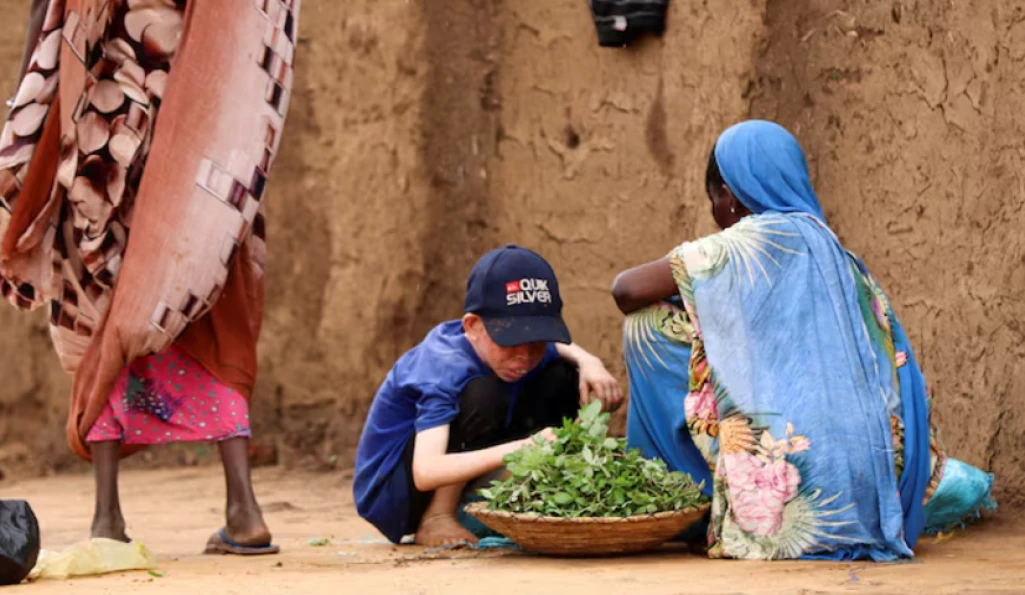
Sudan's
famine-stricken Zamzam displacement camp has been struck by shelling from the
Rapid Support Forces, volunteers and medical aid agency MSF said, as the paramilitary
group seeks to tighten control of the Darfur region in the country's
war.
The
RSF denied attacking the camp, hitherto a safe haven from devastating
fighting in the region, and in remarks to Reuters accused the army-aligned
Joint Forces fighters of deploying within the camp and using civilians as human
shields.
"Not
only have people been starving, but they are also now being bombarded and
forced to flee again," MSF head of emergency operations Michel-Olivier
Lacharité said in a statement that described a "beyond chaotic"
situation with "casualties, panic, and mass displacement."
The army and
the RSF have been locked in conflict for more than 18 months, triggering a
profound humanitarian
crisis in which more than 10 million people have been driven from
their homes and U.N. agencies have struggled to deliver relief.
At least six
people were killed and 13 injured by more than 20 shells fired at Zamzam camp
on Sunday and Monday according to the al-Fashir resistance committee, a
pro-democracy group that has monitored the violence in the area. There were no
reports of shelling on Tuesday morning.
The RSF has
staged an extended siege of nearby al-Fashir, the last major city of the region
still controlled by the army and the allied Joint Forces.
two farmers
have emerged as pioneers in the country of a crop known as 'Red Gold'.
The siege and
exchange of artillery and aerial shelling since April has killed scores and
driven thousands out of the city, including to Zamzam, a vast camp home to at
least half a million people displaced by the current war and by earlier
fighting between non-Arab rebel groups and the Arab militias known as the
Janjaweed who evolved into the RSF.
In August,
the Integrated Food Security Phase Classification (IPC), a global food monitor,
determined that famine was
taking place in Zamzam, and possibly in other camps inside al-Fashir. The
attack took place days after the World Food Programme managed to complete its
first deliveries to Zamzam in months.
People
flee in panic, volunteer says
"The
terrified screams of children can be heard from inside their tents," the
committee said in a post on Facebook on Monday.
Video sent to
several media organisations by volunteers showed tents erected by people newly
arrived in Zamzam abandoned after the shelling. One volunteer described people
panicking and fleeing in all directions from the shelling.
Some fighters
from the Joint Forces - comprised of former Darfur rebel groups who have
aligned with the army - have been present in Zamzam throughout the war, making
it a safe haven from the fighting in al-Fashir until this week.
Yale
Humanitarian Lab, which monitors humanitarian crises around the world, said in
a report in November that it had observed the "creation of defensive
positions in Zamzam consistent with the expectation of attack in the near
future," but did not specify who had constructed them.
"Our
forces are committed to ensuring the safety of civilians and seek by all means
to spare them the dangers of fighting, and will move forcefully to defeat ...
the mercenaries and militias and destroy their last strongholds in
al-Fashir," the RSF said in a statement on Monday.
The RSF
controls most of wider North Darfur, and has attacked villages mainly populated
by non-Arab tribes with arson. The army has also carried out air strikes in
surrounding towns.
At least 84
families fled the fighting in Zamzam and al-Fashir on Sunday and Monday, the
International Organisation for Migration said on Tuesday.
Some have
sought refuge in the town of Tawila and other pockets in the region controlled
by forces from the Sudan Liberation Army loyal to Abdelwahid Nur, a rebel group
that has remained neutral in the war, according to Adam Rojal of the
Coordinating Committee for Displaced People.
But that area
is itself at emergency levels of hunger according to the IPC, and has few
resources to deal with the influx.